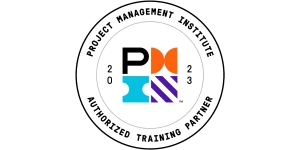Why Baseline Sigma Matters in Continuous Improvement and How to Implement It in Your Business
In today’s highly competitive landscape, companies constantly seek ways to make their processes more efficient and stay ahead of competitors. One of the best ways to stay ahead of competitors is to implement the Six Sigma methodology—it enables you to identify and eliminate inefficiencies in your business. Before diving into Six Sigma, it’s vital to establish a Baseline Sigma level to evaluate your organization’s processes.
This article will explore Baseline Sigma and how it helps your business succeed in the long term.
What is Baseline Sigma and How is it Important for Continuous Improvement?
Baseline Sigma is a statistical measure indicating how well a business process performs. It is a fundamental part of the Six Sigma methodology for identifying and eliminating defects in the production process.
This statistical measure offers a systematic approach to making your business more efficient. It enables you to set greater goals and strive towards them, i.e., continuous improvement.
Why Baseline Sigma?
Numerous metrics can be used to evaluate business performance and productivity. But why is metric preferable above other metrics? Many people understandably ask this question.
This metric is preferable because it offers a more accurate approach for evaluating and improving business processes to a desired level. Other metrics often overlook the root cause of problems, but Baseline Sigma focuses on this factor.
How to Identify Improvement Opportunities with Baseline Sigma?
The first thing to do is list out your company’s Key Performance Indicators (KPIs). These KPIs are quantifiable metrics, and different organizations use different KPIs. For example, a grocery retailer’s KPIs include sales per square foot, conversion rate, inventory turnover, and average transaction value. A restaurant’s KPIs include revenue per available seat hour, foot traffic, cancellation rate, sales by server, etc.
Afterwards, set a Baseline Value for each KPI— a score you assign to each KPI based on current circumstances. For instance, a retail outlet calculates its sales per square foot and sets the figure as a Baseline Value.
After setting the current Baseline Value, set another target value for each KPI. The whole point of Baseline Sigma is closing the gap between the current Baseline Value and the targeted value. You’ll deeply analyze your business processes to identify ways to close this gap, usually by eliminating waste.
How do I learn about Baseline Sigma?
At 6Sigma, we offer formal training courses to teach employees about Six Sigma techniques, including Baseline Sigma evaluation. Our courses dive into the concept and how to apply it to drive greater productivity at your organization. You can sign up yourself or register your employees for our Six Sigma courses, and you’ll have accredited certification to show for it.
SixSigma.us offers both Live Virtual classes as well as Online Self-Paced training. Most option includes access to the same great Master Black Belt instructors that teach our World Class in-person sessions. Sign-up today!
Virtual Classroom Training Programs Self-Paced Online Training Programs







